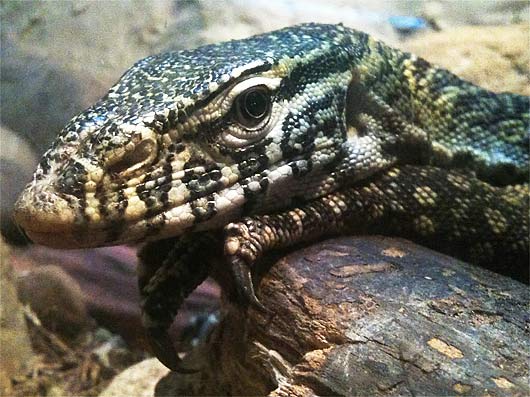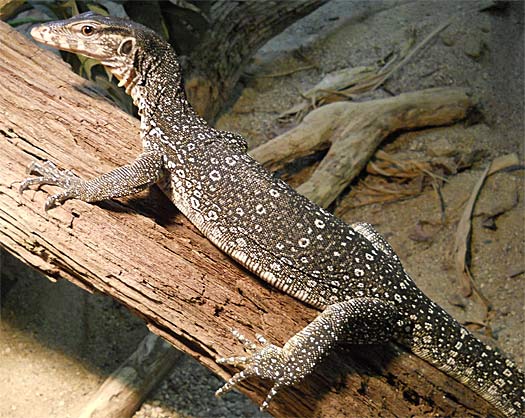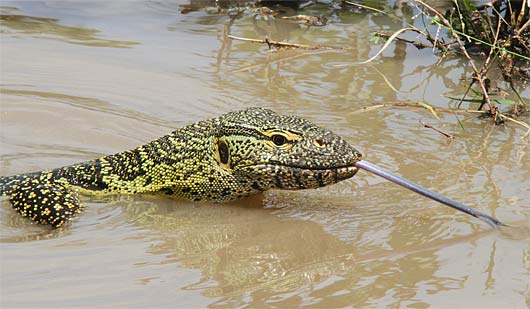Nile Monitor – Versatile African Reptile

Sometimes referred to as the African small-grain lizard, the water leguaan, or the river leguaan, the Nile monitor is one of the largest members of the monitor lizard family. Native to the central and southern regions of the African continent, this lizard also now has established populations in he state of Florida in the US because of the escapes of breeding pet population. These lizards are considered invasive because of the negative impact that they’ve had on the local populations of American crocodiles, from whom they are known to steal eggs and raid nests. These lizards are also suspected to be the perpetrators of domestic pet disappearances throughout their entire range. Perhaps they might prefer Florida because, although there are certainly crocs and Burmese pythons to deal with, they don’t have the battle royal of predators that they might face in Africa like the leopards and many birds of prey.


Nile monitors survive primarily on a diet of fish, snails, frogs, crocodile eggs, young crocodiles, snakes, birds, small mammals, large insects, and carrion. On this diet of “anything goes”, they’ve been observed to grow as large as 44 pounds (20 kilograms), but they can also been found as small as 1.8 pounds (.8 kilograms). They grow to lengths of up to 8 feet (244 centimeters) and are known for their powerful jaws, forked tongues, and claws the enable to dig, climb trees, defend, and attack. They breed once a year and the female can lay up to 60 eggs. Due to large populations and their invasive nature, they show no signs of becoming endangered.

